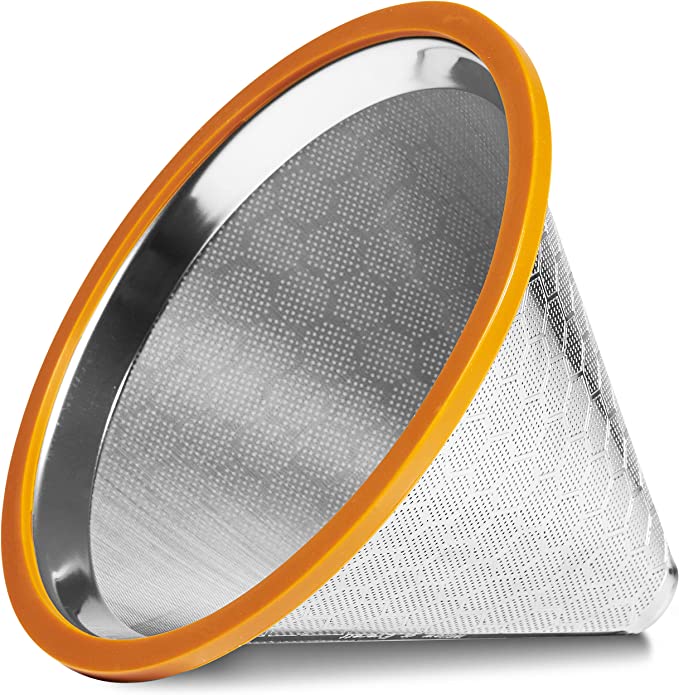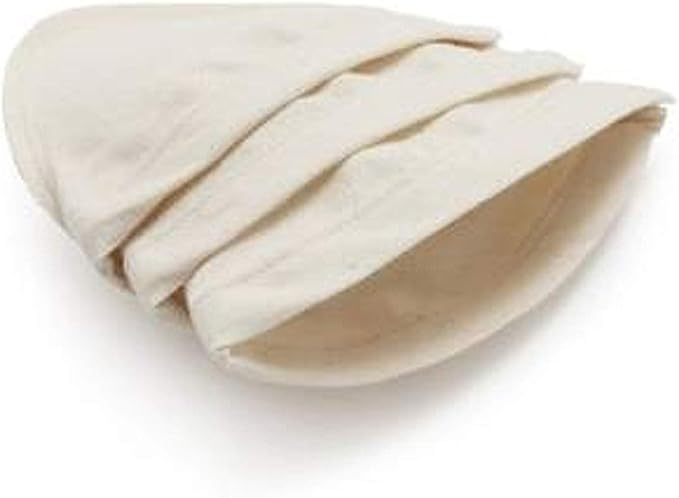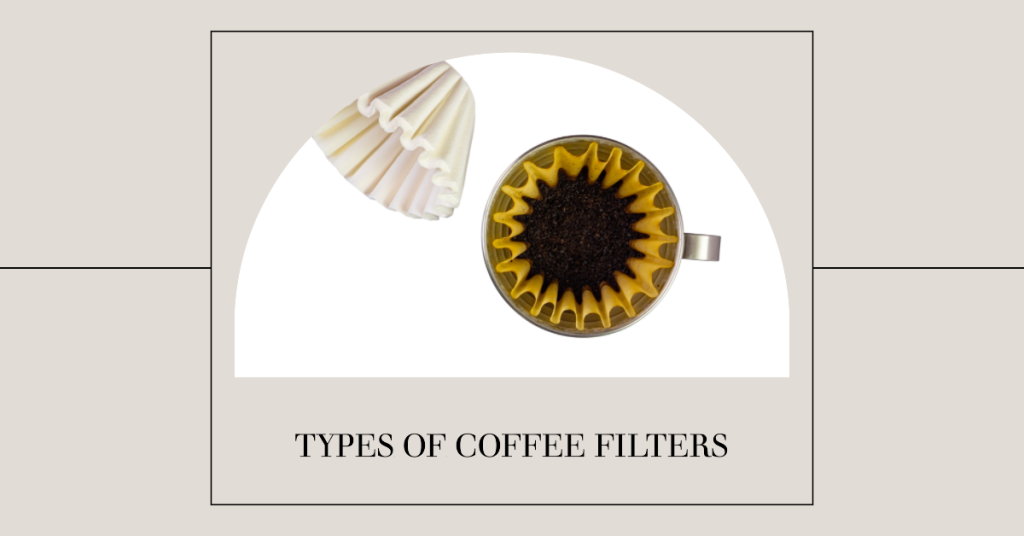Coffee brewing is an art, and like any art form, it requires the right tools. One such crucial tool in the coffee brewing process is the coffee filter. The role of a coffee filter is not just limited to separating the coffee grounds from the liquid; it also plays a significant part in determining the flavor and strength of your coffee.
In this comprehensive guide, we will delve into the world of coffee filter types. Our journey will take us through: various types of coffee filters, exploring their unique characteristics, benefits, and ideal uses. We will also examine how different filters can affect the flavor and texture of your brew, including the surprising interactions that can occur when using non-dairy options like almond milk. For instance, some brewing methods combined with almond milk can lead to the unfortunate occurrence where almond milk curdles, altering your coffee experience.
- An exploration of the three main types of coffee filters: paper, metal, and cloth.
- A detailed discussion on the advantages and disadvantages of each type.
- An examination of how the choice of filter type impacts the taste of your coffee and complements different brewing methods.
- A handy FAQ section to answer your burning questions about coffee filters.
In a rush? Here is a comprehensive comparison of the different filter types:
| Filter Type | Flavor Profile | Cleanup | Sustainability | Compatibility | Cost |
|---|---|---|---|---|---|
| Paper | Produces a clean, light brew with less oils and fine particles. | Easy; simply dispose of after use. | Single-use contributes to waste, but many are biodegradable. | Compatible with most drip and pour-over coffee makers. | Low initial cost, but ongoing cost due to single-use nature. |
| Metal | Produces a robust, full-bodied brew with more oils and fine particles. | Requires regular cleaning to prevent coffee residue buildup. | Reusable and durable, making it an environmentally friendly option. | Compatible with French press, espresso machines, and some pour-over coffee makers. | Higher initial cost, but cost-effective in the long run due to reusability. |
| Cloth | Produces a balanced, smooth brew with some oils and fewer fine particles. | Requires thorough cleaning after each use to prevent coffee residue buildup and potential mold growth. | Reusable and biodegradable, making it an environmentally friendly option. | Often used in some pour-over systems and traditional Japanese siphon brewers. | Moderate initial cost, but cost-effective in the long run due to reusability. |
Table of Contents
Why Choosing a Coffee Filter Matters
Choosing the right coffee filter is more important than you might think. The type of filter you use can significantly affect the taste and quality of your coffee. For instance, some filters allow more oils and fine particles to pass through, resulting in a fuller-bodied coffee, while others filter these out, leading to a cleaner and lighter cup of coffee.
Different coffee filter types also suit different brewing methods and personal taste preferences. For example, if you prefer a strong, robust coffee, a metal filter might be your best bet as it allows more oils and fine particles to pass through. On the other hand, if you enjoy a clean and bright coffee, a paper filter would be more suitable as it filters out most oils and fine particles.
In the following sections, we will delve deeper into the characteristics, pros, and cons of the three main types of coffee filters: paper, metal, and cloth. So, whether you’re a seasoned coffee connoisseur or a novice brewer, stay tuned to discover how you can elevate your coffee brewing game by choosing the right filter.
Paper Coffee Filters
When it comes to coffee filter types, paper filters are perhaps the most commonly used. They are typically made from crepe paper, which is designed to trap the coffee grounds and allow the liquid coffee to flow through.
Paper filters come with a host of benefits. They are disposable, making them a convenient option for those who prefer a quick and easy clean-up after brewing. Moreover, they are excellent at filtering out fine particles and oils, resulting in a clean, light, and crisp cup of coffee.

However, like all things, paper filters have their downsides. They are single-use, which can contribute to environmental waste. Also, as they filter out most of the oils, the resulting coffee may lack some of the flavors and body that coffee enthusiasts love.
Paper filters come in two main shapes: conical and basket. Conical filters are designed to funnel the water through the coffee grounds, resulting in a strong and flavorful brew. Basket filters, on the other hand, spread the water out over a larger surface area of coffee grounds, resulting in a lighter brew.
Here are some tips for using and cleaning paper filters:
- Always rinse your paper filter with hot water before use. This helps to remove any paper taste that might interfere with the flavor of your coffee.
- Dispose of your used paper filter responsibly. Consider composting it if possible.
- Ensure you choose the right size and shape of paper filter to match your coffee maker.
Metal/Steel Coffee Filters

As we continue our exploration of coffee filter types, let’s turn our attention to metal filters. These filters, often made from stainless steel or gold, are reusable and durable, making them a favorite among environmentally-conscious coffee lovers.
Metal filters have a unique set of characteristics that set them apart. They have larger holes compared to paper filters, allowing more oils and fine particles to pass through. This results in a full-bodied, robust cup of coffee that is rich in flavor. Additionally, metal filters are reusable, making them an environmentally friendly option compared to disposable ones. As coffee filter types vary widely, choosing a metal filter not only enhances the brew but also aligns with sustainable practices. With their ability to preserve essential oils and provide a different mouthfeel, metal filters can elevate your coffee experience to new heights.
However, the use of metal filters is not without its challenges. They require regular cleaning to prevent the buildup of coffee residue, which can affect the taste of your brew. Additionally, because they allow more oils and fine particles to pass through, the resulting coffee can sometimes be a bit muddy.
Metal filters are commonly used in various types of coffee brewers, including French press, espresso machines, and some types of pour-over coffee makers.
Here are some tips for using and cleaning metal filters:
- Rinse your metal filter under hot water immediately after use to prevent coffee residue from drying and sticking to the filter.
- For a deeper clean, soak your metal filter in a solution of vinegar and water, then scrub gently with a soft brush.
- Always dry your metal filter thoroughly after cleaning to prevent rust.
Cloth Coffee Filters
As we navigate through the diverse world of coffee filter types, let’s now consider cloth filters. These filters, typically made from natural fabrics like cotton or hemp, offer a unique brewing experience and a distinct flavor profile.
Cloth filters are known for their ability to strike a balance between paper and metal filters. They allow some oils to pass through, enhancing the flavor of the coffee, but they also filter out most of the fine particles, resulting in a clean and smooth brew.

However, cloth filters require a bit more maintenance than their paper and metal counterparts. They need to be cleaned thoroughly after each use to prevent the buildup of coffee residue and potential mold growth. Despite this, they are reusable and biodegradable, making them an environmentally friendly option.
Cloth filters are often used in specific types of coffee brewers, such as some pour-over systems and traditional Japanese siphon brewers.
Here are some tips for using and cleaning cloth filters:
- Rinse your cloth filter with hot water immediately after use to remove coffee grounds.
- For a thorough clean, boil your cloth filter in a pot of water for about 10 minutes, then let it dry completely.
- Store your clean, dry cloth filter in an airtight container to keep it fresh and ready for your next brew.
Pros and Cons of Paper, Metal, and Cloth Coffee Filters
Each filter type – paper, metal, and cloth – has its unique characteristics that can significantly influence your coffee experience. In the table below, we’ve outlined the advantages and disadvantages of each filter type to help you make an informed decision and find the perfect match for your brewing needs and taste preferences. Let’s take a look!
| Filter Type | Pros | Cons |
|---|---|---|
| Paper | – Excellent at filtering out fine particles and oils, resulting in a clean, light brew. – Easy to clean up; simply dispose of after use. | – Single-use, which can contribute to environmental waste. – May filter out some flavors and body, resulting in a less robust coffee. |
| Metal | – Durable and reusable, making it an environmentally friendly option. – Allows more oils and fine particles to pass through, resulting in a full-bodied, robust brew. | – Requires regular cleaning to prevent the buildup of coffee residue. – May allow too many fine particles to pass through, potentially resulting in a muddy brew. |
| Cloth | – Strikes a balance between paper and metal filters in terms of flavor and body. – Reusable and biodegradable, making it an environmentally friendly option. | – Requires thorough cleaning after each use to prevent coffee residue buildup and potential mold growth. – May allow some fine particles to pass through, potentially resulting in a slightly cloudy brew. |
Choosing the Right Filter for Your Coffee Ritual
The journey through the world of coffee filter types brings us to an important question: How do you choose the right filter for your brewing method and taste preference? The answer lies in understanding your personal coffee preferences and the characteristics of different filters.
If you prefer a clean, light coffee and don’t mind the extra waste, paper filters might be your best bet. If you enjoy a robust, full-bodied brew and are environmentally conscious, metal filters could be the way to go. If you’re looking for a balance between the two and don’t mind the extra cleaning, cloth filters could be your perfect match.
Don’t be afraid to experiment with different filters. The beauty of coffee brewing lies in the journey of discovery and the joy of finding the perfect brew that suits your palate.
| Filter Type | Brew Characteristics | Best For |
|---|---|---|
| Paper | Clean, light | Quick cleanup, single-use |
| Metal | Robust, full-bodied | Reusable, environmentally friendly |
| Cloth | Balanced, smooth | Reusable, biodegradable |
Frequently Asked Questions
What type of coffee filter do I need?
The type of coffee filter you need depends on your brewing method and taste preference. Paper filters are great for a clean, light brew, metal filters for a robust, full-bodied coffee, and cloth filters for a balanced, smooth cup.
Does the type of coffee filter matter?
Yes, the type of coffee filter significantly affects the taste and quality of your brew. It determines how much oils and fine particles pass through, which directly impacts the flavor and body of your coffee.
What is the difference between a #2 and a #4 coffee filter?
The difference lies in the size. A #2 filter is smaller and typically used for 1-4 cup coffee makers, while a #4 filter is larger and used for 8-12 cup coffee makers.
What is #1 vs #4 coffee filters?
A #1 filter is smaller and typically used for single-cup coffee makers, while a #4 filter is larger and used for 8-12 cup coffee makers.
Final Thoughts
As we reach the end of our exploration of coffee filter types, it’s clear that the choice of filter plays a pivotal role in the art of coffee brewing. Whether you prefer paper, metal, or cloth filters, each brings its unique characteristics to the table, influencing the taste, body, and overall experience of your coffee.
Remember, there’s no one-size-fits-all when it comes to coffee filters. It’s all about finding what works best for your brewing method and taste preference. So, don’t hesitate to experiment with different filters. You might just discover a new way to enjoy your favorite brew. Here’s to many more delightful coffee experiences!

